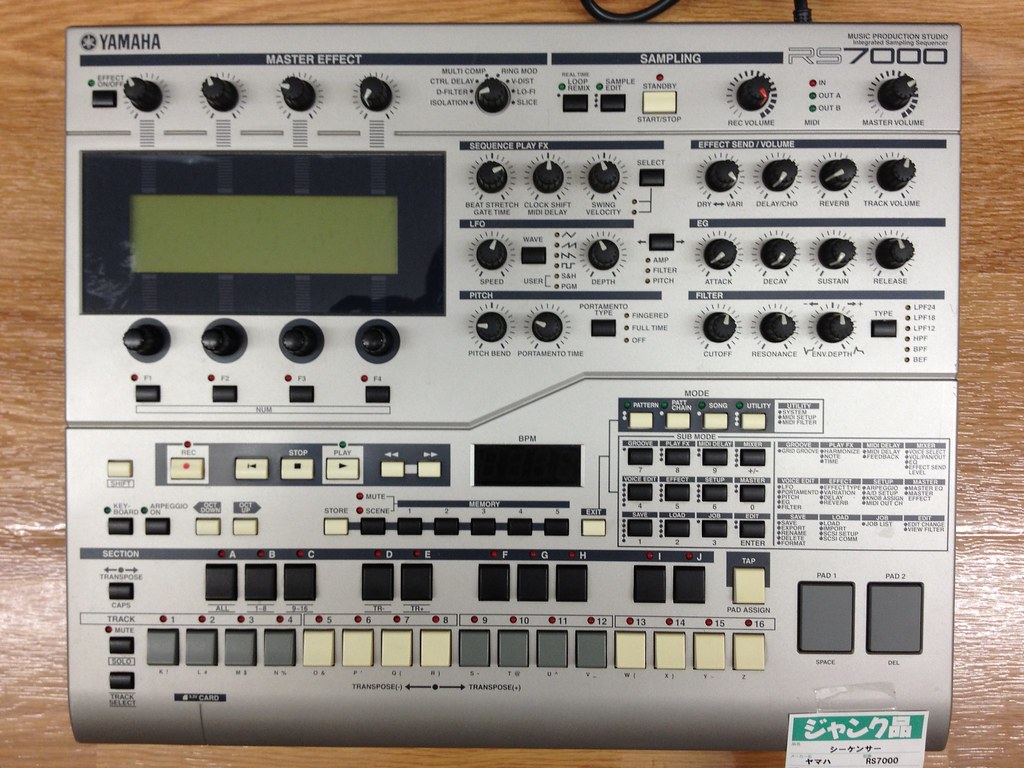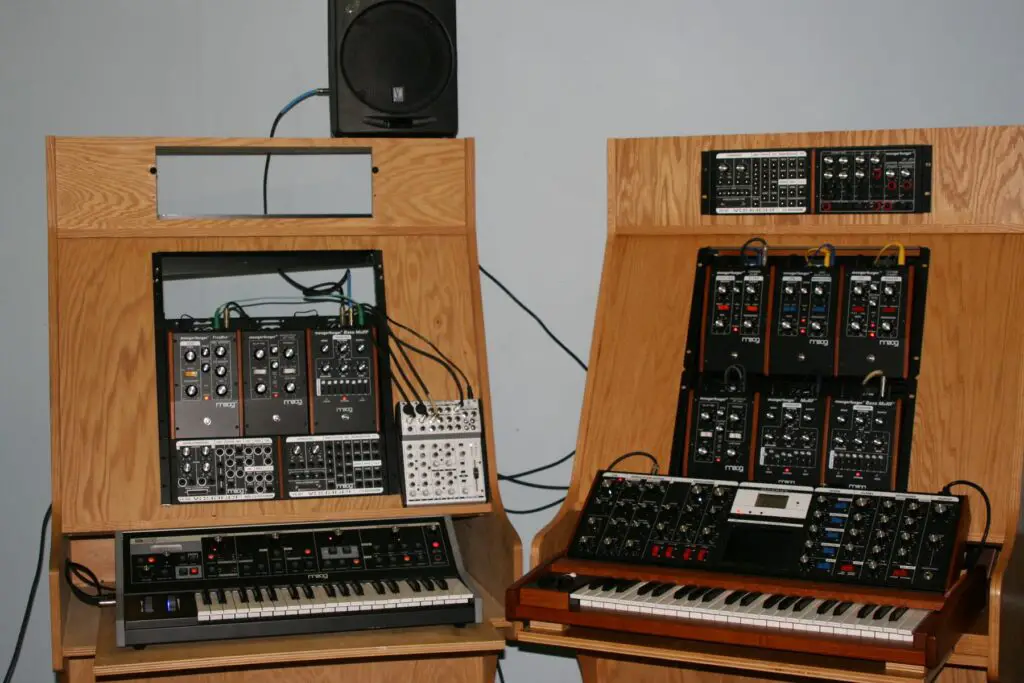Are you looking to get started in music production and don’t know where to begin? Look no further! This complete beginner’s guide to music production will give you everything you need to know to start producing your own music. In this guide, we’ll cover all the basics of music production, including the equipment you’ll need, the software you can use, and the techniques you’ll need to learn, to start creating your music. By the end of this guide, you’ll have a solid understanding of music production, and you’ll be ready to start producing music on your own.
Table of Contents

Introduction
What is Music Production?
Music production is the art of creating, recording, and manipulating sound to produce music. It is a creative process that involves different roles, techniques, and equipment. Music production can be done by anyone with a passion for music, regardless of their skill level.
The Importance of Personal Experience in Music Production
Personal experience is a valuable asset in music production. Engaging in the process of creating, recording, and mixing music helps us to understand and appreciate the nuances of the craft. Whether you are a beginner or an experienced producer, gaining personal experience in music production can help you to refine your skills and grow as an artist.
The Benefits of Music Production for Mental Health
Music production can be a powerful tool for promoting mental health and well-being. The act of creating something can be therapeutic and empowering, allowing us to express our emotions and find meaning and purpose in our lives. By incorporating music production into our lives, we can improve our mental health and overall quality of life.
The Role of Music Production in Social Change
Music has the power to inspire social change and raise awareness about important issues. As music producers, we have the opportunity to use our platform to promote social justice and create music that has a positive impact on the world. This may include collaborating with artists from diverse backgrounds, creating music that addresses social issues, or using our platform to raise awareness about important causes. By using music production as a tool for social change, we can help to create a better world for all.

Understanding Music Production
Music production is a collaborative process that involves different roles, including:
Producer
The producer is responsible for overseeing the entire production process. They work with the artist to help them achieve their vision, select the right musicians, and manage the budget. They also work with the recording engineer and mixing engineer to ensure that the final product meets their standards.
Recording Engineer
The recording engineer is responsible for capturing and editing the sound. They work with the producer and artist to select the right microphones and recording techniques to achieve the desired sound. They also edit and clean up the sound to make it sound professional.
Mixing Engineer
The mixing engineer is responsible for combining the different tracks together. They work with the producer and artist to create a balanced mix that highlights the important elements of the song. They also use effects and automation to create interest and movement in the mix.
Mastering Engineer
The mastering engineer is responsible for finalizing the mix and preparing it for distribution. They work with the mixing engineer to ensure that the mix sounds good on all playback systems. They also use compression and equalization to make the mix sound consistent and polished.
Music Production Process Overview
The music production process involves the following steps:
-
Pre-production: This involves planning and preparation. The producer works with the artist to select the songs, musicians, and recording location. They also discuss the desired sound and the budget.
-
Recording: This involves capturing the sound. The recording engineer selects the right microphones and recording techniques to achieve the desired sound. They also record the performance and edit it to make it sound professional.
-
Editing: This involves cleaning up the sound and arranging it. The recording engineer removes any unwanted noise or mistakes. They also arrange the different tracks in the DAW to create the desired structure and flow.
-
Mixing: This involves combining the different tracks together. The mixing engineer works with the producer and artist to create a balanced mix that highlights the important elements of the song. They also use effects and automation to create interest and movement in the mix.
-
Mastering: This involves finalizing the mix and preparing it for distribution. The mastering engineer works with the mixing engineer to ensure that the mix sounds good on all playback systems. They also use compression and equalization to make the mix sound consistent and polished.
Basic Equipment Needed for Music Production
To get started in music production, you need the following basic equipment:
- Computer: A computer is essential for running the DAW software and storing your music files.
- Digital Audio Workstation (DAW) software: A DAW is the software used to record, edit, and mix music. There are many different options available, ranging from free to expensive.
- Audio interface: An audio interface is used to connect your computer to external audio equipment, such as microphones and studio monitors.
- Studio monitors or headphones: Studio monitors or headphones are used to listen to your mix and make sure that it sounds good on all playback systems.
- Microphone: A microphone is needed to capture the sound of instruments and vocals.
The Role of Technology in Music Production
Technology has revolutionized the music production industry in countless ways, making it easier than ever to create, record, and distribute music. Digital audio workstations (DAWs) have replaced traditional tape recording, making it possible to record and edit music in the same software. Plugins and virtual instruments have also made it possible to create a wide range of sounds without the need for expensive equipment. However, it’s important to remember that technology is just a tool it’s up to us as producers to use it in creative and innovative ways to push the boundaries of what’s possible in music production.
Personal Experience Story: Networking and Collaboration in Music Production
As a beginner music producer, John struggled to create a unique sound that would stand out in the industry. He had the basic equipment and software, but he didn’t know how to use them to their full potential. One day, he stumbled upon an online community of music producers who shared their knowledge and expertise. Through this community, John met a seasoned producer named Sarah who took him under her wing. Sarah taught John some advanced mixing techniques, including using parallel processing for depth and width. She showed him how to use automation to create movement and interest in his tracks. As a result of her guidance, John was able to improve his sound quality and create tracks that caught the attention of industry professionals. He even landed his first gig as a producer for a local artist. John’s experience shows the importance of networking with other music producers and seeking out mentors who can help you develop your skills and take your music production to the next level.

Music Production Software for Beginners
Music production software is the backbone of modern music production, and it’s an essential tool for every beginner. There are many music production software options available, including Ableton Live, FL Studio, Logic Pro, Pro Tools, and Cubase. Each has its own unique features and pricing structure, so it’s essential to compare them before making a decision.
Overview of Popular Music Production Software
Let’s take a closer look at the most popular music production software and their unique features:
-
Ableton Live: Ableton Live is a popular software that allows you to create, produce, and perform music. It’s known for its intuitive interface and session view, which allows you to create music on the fly.
-
FL Studio: FL Studio is a powerful digital audio workstation (DAW) that’s popular among hip-hop producers. It has a user-friendly interface and comes with a wide variety of plugins and effects.
-
Logic Pro: Logic Pro is an industry-standard DAW that’s popular among professional music producers. It has a powerful set of features, including a vast library of sounds and effects.
-
Pro Tools: Pro Tools is a professional-grade DAW that’s widely used in the recording industry. It’s known for its powerful editing and mixing capabilities, making it an excellent choice for advanced users.
-
Cubase: Cubase is a versatile DAW that’s popular among electronic music producers. It has a user-friendly interface and comes with a wide variety of plugins and effects.
Comparison of Features and Pricing
When choosing music production software, it’s important to compare the features and pricing. Here’s a comparison of the most popular music production software:
| Software | Features | Pricing |
|---|---|---|
| Ableton Live | Session view, built-in instruments and effects, MIDI and audio editing, audio warping | $99 to $749 |
| FL Studio | Step sequencer, mixer, MIDI support, audio recording, automation, effects and plugins | $99 to $899 |
| Logic Pro | Smart controls, built-in instruments and effects, MIDI and audio editing, advanced mixing tools | $199.99 |
| Pro Tools | Advanced audio editing, mixing, and automation, MIDI support, built-in effects and plugins | $29.99 to $79.99 per month |
| Cubase | Score editor, built-in instruments and effects, MIDI and audio editing, advanced mixing tools | $99.99 to $579.99 |
Tips for Choosing the Right Software for Your Needs
Choosing the right music production software can be overwhelming, but here are some tips to help you make an informed decision:
-
Consider your budget. Music production software can range from a few hundred dollars to thousands of dollars, so it’s essential to consider your budget before making a decision.
-
Look for user-friendly software. As a beginner, you want to choose software that’s easy to use and has a user-friendly interface.
-
Research the software’s features and compatibility. Before making a final decision, research the software’s features and compatibility with your computer.
-
Test out different software options. Most music production software offers a free trial, so take advantage of this and test out different options before making a final decision.

Recording and Mixing Techniques
Tips for Recording High-Quality Audio
To record high-quality audio, it’s important to choose the right equipment and create an optimal recording environment. Here are some tips to get you started:
- Choose a quiet recording space. Look for a room with minimal background noise, or consider soundproofing your recording space.
- Use a high-quality microphone. Invest in a microphone that is suited to your needs and budget.
- Use pop filters and windshields to reduce background noise. These tools can help to eliminate pops and hisses in your recordings.
- Use proper microphone placement. Experiment with different microphone positions to find the best sound for your recording.
Essential Mixing Techniques for Beginners
Mixing can be a complex process, but there are some essential techniques that every beginner should know. Here are a few tips to help you get started:
- Set the levels properly. Make sure that each track in your mix is balanced and not too loud or too quiet.
- Use panning to create a stereo image. Experiment with panning to create a sense of space and depth in your mix.
- Use EQ to balance the frequencies. Use equalization to boost or cut frequencies to create a balanced and clear mix.
- Use compression to control the dynamics. Compression can help to even out the levels in your mix and create a more polished sound.
Tips for Achieving a Balanced Mix
A balanced mix is essential for creating a professional sound. Here are some tips to help you achieve a balanced mix:
- Use reference tracks to compare your mix. Listening to professionally produced tracks can help you to identify areas where your mix may need improvement.
- Use automation to adjust levels and effects. Automating the levels and effects in your mix can help to create a more dynamic and interesting sound.
- Use reverb and delay to create depth. Reverb and delay can be used to create a sense of space and depth in your mix.
Personal Experience Story: The Importance of Taking Breaks
As a music producer, it’s easy to get lost in the creative process and work for hours on end. However, it’s important to take breaks and give your ears and brain a rest. Sarah, a seasoned producer who mentored John, emphasized the importance of taking breaks during long recording and mixing sessions. She recommended taking short breaks every hour to rest your ears and clear your mind. John followed her advice and found that he was able to maintain his focus and productivity over longer periods of time, leading to better results in his productions.
The Benefits of Collaborating with Other Producers
Collaborating with other producers can be a great way to learn new skills, expand your network, and gain new perspectives on music production. When you collaborate with other producers, you have the opportunity to share your knowledge and expertise, as well as learn from others who may have different experiences and perspectives. By working together, you can create music that is truly unique and tap into your full creative potential.
The Importance of Diversity in Music Production
Diversity is an important aspect of music production, as it helps to ensure that a wide range of voices and perspectives are represented in the industry. By embracing diversity, we can create music that is more inclusive and reflective of the world around us. This means actively seeking out and supporting artists from diverse backgrounds and working to break down barriers that may prevent certain groups from entering the industry. As music producers, we have a responsibility to create a more diverse and inclusive music community.
Genre-specific Music Production Techniques
Each genre of music has its own unique characteristics and requires different production techniques to achieve the desired sound. Here are some examples:
Hip-hop
Hip-hop music is characterized by its heavy bass and percussion, and its use of vocal manipulation. To produce hip-hop music, it is essential to have a good understanding of the following:
- Use of drum machines and samplers to create dynamic beats.
- Layering of different sounds to create unique textures.
- Manipulation of vocal tracks to create unique effects.
Rock
Rock music is often guitar-driven with live drums and aggressive vocals. To produce rock music, it is essential to have a good understanding of the following:
- Use of distortion and other effects to create a gritty sound.
- Layering of different guitar tracks to create a full sound.
- Use of live drums to create a dynamic rhythm section.
Electronic
Electronic music is characterized by its use of synthesizers, drum machines, and heavy effects. To produce electronic music, it is essential to have a good understanding of the following:
- Use of synthesizers to create unique sounds and textures.
- Use of drum machines to create dynamic beats.
- Use of effects such as reverb, delay, and distortion to create a unique sonic landscape.
Tips for Producing Different Genres of Music
Regardless of the genre, here are some tips for producing music:
- Research the genre and listen to examples to get a feel for the sound.
- Use appropriate instrumentation and sound design to create the desired sound.
- Understand the song structure and arrangement to create a cohesive and engaging track.
Personal Experience Story: Learning to Produce Hip-hop Music
John, a beginner music producer, was initially interested in producing rock music. However, his mentor Sarah encouraged him to explore other genres, including hip-hop. John listened to examples of hip-hop music and studied the production techniques used in the genre. He learned how to use drum machines and samplers to create dynamic beats, how to layer different sounds to create unique textures, and how to manipulate vocal tracks to create unique effects. John found that producing hip-hop music allowed him to push his creative boundaries and develop new skills that he could apply to other genres as well.

Music Theory for Music Production
Music theory is a fundamental aspect of music production that helps producers create captivating melodies and harmonies. In this section, we will discuss the basics of music theory, how to apply it to your music production process, and recommended resources for learning music theory.
Understanding the Basics of Music Theory
Music theory is a vast subject that involves the study of scales, chords, rhythm, melody, harmony, and much more. As a beginner music producer, understanding the following basics of music theory will help you create better music:
-
Scales and Chords: Learn about the different types of scales, including major, minor, pentatonic, and blues scales. Also, learn how to construct chords and chord progressions to create different moods and emotions in your music.
-
Rhythm and Timing: Rhythm and timing are essential components of music production. Understanding concepts like time signatures, tempo, and syncopation will help you create a strong groove in your music.
-
Song Structure: The structure of your song is crucial to its success. Learn about the different sections of a song, such as verse, chorus, and bridge, and how to use them effectively in your music.
How to Apply Music Theory to Your Music Production Process
Applying music theory to your music production process is all about understanding how to use the concepts you have learned to create better music. Here are some tips for applying music theory to your music production:
-
Choose Appropriate Scales and Chords for Your Genre: Different genres of music use different scales and chords. Research which scales and chords are commonly used in your genre and use them in your music.
-
Use Rhythm and Timing to Create a Groove: Experiment with different rhythms and time signatures to create a unique and catchy groove in your music.
-
Structure Your Song for Maximum Impact: Effective song structure can make or break a song. Use the different sections of a song to create tension and release, and to keep your audience engaged.
Recommended Resources for Learning Music Theory
Learning music theory can be challenging, but there are many resources available to help you. Here are some recommended resources for learning music theory:
-
Music Theory Books: There are many excellent music theory books available that cover everything from the basics to advanced concepts.
-
Online Courses and Tutorials: Online courses and tutorials are a great way to learn music theory at your own pace. There are many free and paid options available.
-
Music Theory Apps: There are also many music theory apps available that can help you learn and practice music theory on the go.

Sound Design for Music Production
Sound design is an essential part of music production that involves creating unique and creative sounds. To understand sound design concepts, it is important to learn about different techniques such as synthesis, sampling, and effects processing.
Synthesis
Synthesis is the process of creating sound through electronic means. There are different types of synthesis techniques, including subtractive synthesis, additive synthesis, and wavetable synthesis. It is recommended to experiment with these techniques to create unique sounds.
Sampling
Sampling involves taking a portion of an existing sound and using it in a new composition. Editing and manipulating samples can help produce new and unique sounds. It is important to follow copyright laws when using samples.
Effects Processing
Effects processing involves using different effects to modify sounds. Some common effects used in sound design include reverb, delay, and distortion. Using effects creatively can help produce new and unique sounds.
Tips for Designing Unique and Creative Sounds
Here are some tips for designing unique and creative sounds:
- Experiment with different synthesis techniques and parameters.
- Edit and manipulate samples by using techniques such as time-stretching, pitch-shifting, and reversing.
- Use effects processing creatively by combining different effects and adjusting parameters.
Recommended Resources for Learning Sound Design
Here are some recommended resources for learning sound design:
- “The Synthesizer” by Mark Vail – a comprehensive guide to synthesizers and synthesis techniques.
- Online courses and tutorials on platforms such as Udemy, Coursera, and Skillshare.
- Sound design software such as Serum, Massive, and Omnisphere.

Arrangement and Composition for Music Production
As a beginner music producer, creating memorable melodies and chord progressions can be a challenging task. To help you in this process, here are some tips:
Tips for Creating Memorable Melodies and Chord Progressions
- Use appropriate scales and chords for your genre. Each genre of music has its own unique scales and chords that are commonly used. Understanding which scales and chords work best for your genre will help you create melodies and chord progressions that fit the sound you’re going for.
- Experiment with melody and harmony. Try out different melodies and harmonies until you find a combination that works well together. Don’t be afraid to take risks and try new things.
- Create contrast and variation. To keep your melodies and chord progressions interesting, create contrast and variation within them. This can be accomplished by changing the rhythm, dynamics, or instrumentation throughout the song.
Understanding Song Structure and Arrangement
Understanding song structure and arrangement is crucial in creating a well-structured and cohesive song. Here are some important components to keep in mind:
- Verse, chorus, and bridge. Most songs follow a structure that includes a verse, chorus, and bridge. The verse sets up the story or message of the song, the chorus is the catchy and memorable part of the song, and the bridge provides a contrast to the verse and chorus.
- Intro and outro. The intro sets the tone for the song and grabs the listener’s attention, while the outro signals the end of the song and provides closure.
- Instrumentation and dynamics. The use of different instruments and dynamics throughout the song can help create variation and keep the listener engaged.
Recommended Resources for Learning Composition Techniques
Here are some recommended resources for learning composition techniques:
- Composition books. There are many books available that teach music theory and composition techniques. Look for books that are specific to your genre of music.
- Online courses and tutorials. Websites like Udemy and Coursera offer a wide range of online music production courses and tutorials.
- Music composition software. Many music composition software programs offer tutorials and resources to help beginners learn composition techniques. Some popular music composition software programs include Ableton Live, Logic Pro X, and FL Studio.

Mixing and Mastering for Music Production
Once you have completed the recording and mixing process, it is time to polish your tracks with mastering. Mastering is the final step of the production process where the final mix is balanced and optimized for playback on different audio devices.
Advanced Mixing Techniques for Improving Your Sound Quality
To improve your sound quality, follow these advanced mixing techniques:
- Use the right EQ for each instrument: Use EQ to bring out the best sound in each instrument and to carve out space for other instruments to sit in the mix.
- Use parallel processing for depth and width: Parallel processing is a technique used to create additional depth and width in the mix. It involves duplicating a track and processing it differently before blending it back in with the original track.
- Use automation to create movement and interest: Automation is the process of adjusting the levels, panning, and effects of individual tracks over time. This technique can be used to create movement and interest in the mix.
Tips for Mastering Your Tracks
Here are some tips for mastering your tracks:
- Use a reference track to compare your mix: A reference track is a professionally mixed and mastered track that is similar in style and genre to your own mix. It can be used as a benchmark for your own mix to ensure that it is competitive with other professionally produced tracks.
- Use EQ and compression to balance the mix: EQ and compression are powerful tools that can be used to balance the frequency spectrum and dynamic range of the mix. This process can also help to control unwanted resonances and improve the clarity of the mix.
- Use limiting to increase the volume: Limiting is a process used to increase the overall volume of the mix without causing distortion. This technique is commonly used in mastering to bring the overall level of the mix up to a commercial level.
Recommended Resources for Learning Mixing and Mastering Techniques
Here are some recommended resources for learning mixing and mastering techniques:
- Mixing and Mastering books: There are many books available that cover the theory and techniques of mixing and mastering. Some popular options include “Mixing Secrets for the Small Studio” by Mike Senior and “Mastering Audio” by Bob Katz.
- Online courses and tutorials: There are many online courses and tutorials available that cover mixing and mastering. Some popular options include the courses offered by Berklee Online and the tutorials on the website “The Pro Audio Files.”
- Mixing and Mastering software: There are many software options available for mixing and mastering. Some popular options include Pro Tools, Logic Pro X, and Ableton Live.
Additional Resources for Beginner Music Producers
As a beginner music producer, it’s important to have access to the right resources to help you learn and improve your skills. Here are some recommended resources that can help you learn music production:
1. Books and Courses
-
“Mixing Secrets for the Small Studio” by Mike Senior is an excellent book that can help you learn the basics of mixing and mastering. The book provides a detailed explanation of various mixing techniques and provides real-world examples that can help you improve your skills.
-
“Music Production in Logic Pro X” by David Nahmani is a great course for beginners who want to learn how to use Logic Pro X. The course covers everything from setting up your project to creating your first song. The course is available on Udemy, an online learning platform.
2. YouTube Channels
- “The Recording Revolution” is a popular YouTube channel that offers a variety of tutorials on music production. The channel is run by Graham Cochrane, an experienced music producer, and provides valuable insights into the music production process.
Tips for Networking with Other Music Producers
Networking with other music producers can help you learn from their experiences and improve your skills. Here are some tips for networking with other music producers:
-
Join online music production communities such as Reddit’s /r/musicproduction or Gearslutz. These communities have a wealth of information and can help you connect with other music producers.
-
Attend music production events and conferences. Attending events can help you meet other music producers and learn from their experiences. You can find events in your local area or attend online events.
-
Collaborate with other music producers. Collaborating with other music producers can help you learn new techniques and gain valuable experience. You can collaborate with other music producers online or in person.
Conclusion
In conclusion, music production is an exciting and rewarding journey that allows you to express your creativity and bring your musical ideas to life. With the right tools, techniques, and passion, anyone can become a successful music producer. By following the tips and strategies outlined in this beginner’s guide, you’ll be well on your way to creating professional-quality music that reflects your unique style and vision.
As a beginner music producer, it’s important to remember that the road to success is not always easy. It takes dedication, hard work, and a willingness to learn from your mistakes. But with persistence and a positive attitude, you can achieve your goals and make your mark in the music industry.
We hope this guide has provided you with valuable insights and practical advice to help you get started in music production. If you’re looking for more resources and information on how to improve your music production skills, be sure to check out our other guides and articles. With our help, you’ll be well on your way to creating music that inspires and delights audiences around the world.


